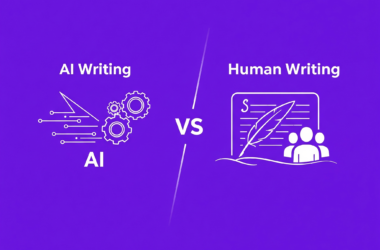Table of Contents
- What Is the Importance of Technical Content Writing?
- Understanding Advanced Techniques and Why They Are Necessary
- What is the need for advanced techniques in technical content writing:
- 1. Become a Master of Tone and Style
- 2. Knowing Your Audience Inside and Out
- 3. Master the Art of Clarity: From Jargon to Plain Language
- 4. Establish Business Contacts
- 5. Embracing The Power of Visual Beyond Screenshots
- 6. Structure for Success: Creating a User-Friendly Flow
- 7. The Content Doesn’t End Here: The Importance of Maintainance
- Case Studies
- Conclusion and Next Steps
As technology constantly evolves, companies struggle to communicate clearly and effectively. Be it complex software, machinery, or even updated processes, the need for highly skilled technical writers is on the rise for heavy demand of technical content writing
Lack of easy-to-understand writing would result in frustrated customers, wasted time, and decreased user adoption. In light of this, companies are willing to invest in technical content that captivates their audiences and boosts sales.
Moreover, technical writers’ employment is expected to expand by 7% between 2022 and 2032, outpacing the overall growth rate. This guide aims to enlighten technical content writers, businesses, and digital marketers on how to create compelling content that not only educates but also establishes them as thought leaders in their fields/industries.
So, are you ready to position yourself for success by learning advanced technical writing skills? Let’s dive in!
What Is the Importance of Technical Content Writing?
Most users struggle with understanding the technical side of most products and services despite a user manual being present. This is because most user manuals use complicated language that most people cannot understand.
User manuals mostly contain charts, tables, illustrations, and diagrams that demonstrate how the product or service is supposed to be used. However, industry experts like engineers, scientists, programmers, developers, etc., write those manuals, which are full of technical jargon, making it difficult for users to understand.
Technical content writing bridges that gap!
It takes the dry, statistical information found in sales copies or user manuals and breaks it down into easily readable and digestible material that anyone can understand. Each aspect of a topic is explained in easy-to-understand language; where necessary, images and videos are used to demonstrate and explain complex processes.
Technical content explains how the information in the user manual can be applied in different scenarios to solve specific issues. Well-crafted technical content ensures your users have a smooth experience and increases customer satisfaction.
Understanding Advanced Techniques and Why They Are Necessary
Every writer is familiar with basic technical content writing techniques. But in an ever-changing digital space and with readers’ fleeting attention spans, what will make technical content stand out?
Understanding advanced technical content writing techniques will make your content unique. Just like any other content, technical content must be visually appealing to capture readers’ attention. Further, SEO is another crucial aspect to ensure a high ranking on search engines.
What is the need for advanced techniques in technical content writing:
a) Visual Communication
Incorporation of visual elements into your technical content writing boosts understanding and increases engagement rates.
b) SEO
SEO practices such as keywords, metadata, etc., will improve your content’s ranking, making it easier for your target audience to find in the search results.
c) Audience Understanding
Using analytics to understand your target audience helps you tailor content to fit their preferences regardless of their area of expertise.
d) Engaging delivery
Technical content is complex and difficult to digest. Advanced techniques like visual elements help break down the learning process, making it interactive and fun.
e) Accessibility
Techniques like customization of content and user-friendly design ensure that your content is accessible across multiple devices and platforms.
f) Gives content a competitive edge
Using advanced techniques will make content stand out and give it a competitive edge in a sea of content.
In addition, technical content writers need to be knowledgeable in the specific industry to ensure reliable information.
So, what are these advanced techniques? They include mastering tone and style, knowing your audience, mastering the art of clarity, and strategic use of visual elements.
1. Become a Master of Tone and Style
Mastering style and tone is a powerful tool for capturing the audience’s attention, evoking emotions, keeping them engaged, and establishing the writer as a credible authority in that particular industry.
While technical writing is usually precise and to the point, this technique can be used without interfering with the flow and professionalism associated with technical content writing.
A well-crafted tone speaks directly to your audience and guides them through the content, encouraging them to keep reading through each and every step. It should also align with the intended message that one wants to pass across.
For example, if one is writing about how to troubleshoot a computer or software, a supportive tone along with authoritativeness will keep the readers hooked.
2. Knowing Your Audience Inside and Out
The importance of knowing the audience can never be understated. A good technical content piece is nothing if it doesn’t resonate with one’s audience.
By understanding the audience inside and out, a technical content writer can tailor technical content to fit the target audience’s preferences.
What do you need to know about your audience?
A writer needs to know the audience’s technical proficiency, preferred learning style, industry or domain knowledge, and the tools and technologies they use, and the industry or domain knowledge.
After that, tailor content to fit their needs, proficiency, knowledge, goals, or even all of these. This approach increases engagement with the audience, builds loyalty, trust, and credibility, and positions one as a leading authority in that particular field/industry.
3. Master the Art of Clarity: From Jargon to Plain Language
Technical writing is where complexity resides. Clarity is paramount for effectively communicating complex information. Clear and concise content helps prevent misunderstanding, assists in learning and retaining technical knowledge, and facilitates comprehension.
Remember, most of the time, the audience is not well-versed in technical jargon. By using plain language instead of jargon, technical content writers make sure they are understood by all, regardless of their knowledge or expertise in the industry. The use of plain and easy language builds trust and confidence in a brand and significantly improves engagement.
4. Establish Business Contacts
Even if technical writers have all the information required to create a draft, they must consider making connections both inside and outside the company for vital pieces of data.
A solid rapport with the leads, teams, stakeholders, etc., from relevant departments will help create fantastic content. To accomplish the piece successfully, one must engage in one-to-one communication with the concerned authority.
5. Embracing The Power of Visual Beyond Screenshots
Visual aids alone aren’t enough; they have to be used strategically. Therefore, don’t place all images and diagrams in the same place. Instead, ensure they are clear and visible to the readers. Know what type of visual aids to use and where and when to use them. Ensure the readers can easily understand the visual aids used.
How do you use visual aids effectively?
- Tables: Put data sets and organized information in clearly structured tables.
- Animations: Use animations to break down complex processes step-by-step, making the learning experience fun and interactive.
- Graphs and charts: Use charts and graphs to show comparisons and patterns, making it easy to interpret complex data with just one glance.
- Interactive elements: Clickables, 3D models, tooltips, or collapsible sections allow readers to explore your content and access additional information where needed.
6. Structure for Success: Creating a User-Friendly Flow
Well-structured content is easy for the reader to understand and highly effective. It is presented logically and guides the reader from one point to another.
To achieve that, clear headings and subheadings that break down the content into digestible chunks are essential. For images, placement and labelling must be considered. Moreover, bullets and numbers can be used for lists and step-by-step instructions to improve readability.
7. The Content Doesn’t End Here: The Importance of Maintainance
Technical content is not just written and published; it has to be constantly updated. The technology or machine documented will evolve or be upgraded, and the content should evolve with it.
No reader wants to read about old technology when a new version is available. Thus, a technical content writer should be up to date with industry trends and update their content accordingly. Regular updates keep the content relevant and valuable to readers.
Case Studies
Here are some recent examples that show how powerful well-crafted technical content can be:
1. Whitepaper by Apple on its Carbon Removal Strategy (2024)
Technical content like Apple’s whitepaper on carbon neutrality can be a powerful tool. By clearly outlining its environmental goals, Apple can attract eco-conscious consumers. Besides, it can reduce operational costs through efficiency improvements and potentially position itself as a leader in sustainable technology. This helps Apple to build a stronger reputation, lower expenses, and a competitive edge in the marketplace.
2. OpenAI GPT-4 Technical Report (2023)
OpenAI’s white paper on GPT-4 effectively employs technical writing to showcase the model’s capabilities and potential. The paper details GPT-4’s superior performance on various NLP tasks, highlighting its generalizable strengths across languages. Importantly, the paper emphasizes how clear explanations facilitated the prediction of GPT-4’s performance, demonstrating a strong link between technical writing and successful AI development.
This transparency fosters trust and allows for further research on the safety and responsible deployment of GPT-4. Overall, the GPT-4 white paper exemplifies how technical writing can effectively communicate complex information, promote understanding, and pave the way for advancements in AI.
Conclusion and Next Steps
To become a pro in technical content writing, you must master both the basic and advanced techniques. Understanding the audience, adapting style and tone, and eliminating jargon will make content stand out.
Now that you have learned the advanced techniques of technical content writing, it is time to put them into practice! With the knowledge you have gained, what next?
- Audit your content: Review technical content to ensure it meets the standards. Make the necessary revisions and improve the content.
- Make use of new tools: Explore the world of technical writing tools and identify which tools can assist in technical content writing.
- Conduct tests: Experiment with a website, trying different combinations of fonts, colors, and layouts. Check to see which one appeals most to the audience.
For those who want to venture into technical content writing, research how to become a technical writer and incorporate these advanced techniques to set oneself apart as an industry leader.
For businesses that want to leverage technical content as part of their marketing strategy, exploring WittyPen’s content writing services is the obvious next step. Make your content stand out with WittyPen.











